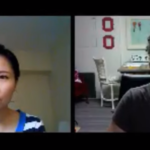
Imagine that you just purchased a machine for your manufacturing plant. Technically, you leased it and the cost of the lease is $5,000/month and that doesn’t include additional costs like ongoing maintenance costs as well as costs payable to your government for the right to operate this particular piece of machinery.
Now, imagine that you just purchased 10 of these. They all have a different makeup, and all come from different places but you expect them to perform the same task at an optimal level. You would expect there to be a manual for these new devices, right? Well how come there isn’t one for the hiring process? Because that is the exact same thing you are doing, in a sense.
There are many different schools of thought when it comes to hiring and for good reason, as each individual hire you make is essentially a significant investment…and a gamble, especially for a start-up entrepreneur. Make the right call and you can begin to build a staff that can compete with any company of any size in the industry. Make the wrong decision and it could be a backbreaker, both in terms of the wasted money and time you have invested in an employee that couldn’t perform the tasks in question.
At the end of the day, business success boils down to the idea of minimizing risk while maximizing return and nowhere is this risk/reward ratio more prominent or important than the hiring. If you’re a start-up entrepreneur, the first hire or two you make are going to be the most critical. It’s pretty much a given that at no other point during the evolution of your company will you be boosting your labor force by 50% at once, which is exactly what will happen when you bring on a second person in your company. So before you make the next hire, ask yourself the following questions:
1. Why are you hiring this person?
When I was growing my company, I made sure that the first couple of hires I made were specifically folks whose skill sets complemented my own. While I knew what my strengths were, I also knew what my weaknesses were, and I specifically sought out individuals who could help me by augmenting the skills in which I needed some help.
The one thing I did not do, at least early on, was hire a “clone” of myself. I was already devoting all of my energy into the company, so I knew that in the first few months my skill sets were completely covered. When I grew the company to the point where I just couldn’t successfully devote all of my energies to running the business and I wished there were two of me, that’s when I began looking to hire somebody who was exactly like me (or, close to it, anyway).
2. How do you know this is the right person?
On the surface, hiring the right person seems like a no-brainer. You have a spot to fill. You bring in a potential hire for an interview. You like that person’s resume. You check the references, and they check out. You ask that person some questions, and you like the answers. You hire that person. And both you and your new hire go on to live happily ever after, growing your company to bigger and better things every day…
If only it were that simple. And it may very well be that simple for a low-level hire for your company. But for the top level executives, people on whom you need to be able to count on, you need to go a step further.
I can’t recommend strongly enough the administration of an employee assessment form, such as the Predictive Index (or “PI” for short), for important hires you make for your company. (Although, to be honest, every hire you make is important). Tests such as the PI allow you to deep dive into the emotional and psychological makeup of prospective hires to get a feel for how they perceive themselves and how they feel they are perceived by others. As the employer, you need to fill out a psychological profile for the ideal candidate for a particular position you are looking to fill and administer the PI to your prospective hire. The closer the match, the better the chances that the hire will be a good fit for your position.
But do the research on the PI and other employee assessment forms, and then figure out which ones you’ll be most comfortable administering. It’s a line item that is not without cost, but the savings you’ll enjoy in making the right hire the first time around will more than make up for it.
3. About those references….
So you checked out the resume of your potential hire and you liked what you saw. And you called the references listed on the resume (or the ones that were “available upon request”) and they had nothing but glowing things to say.
Seems like a match made in heaven, right?
Not so fast….
Go back and double check that resume. Let’s say, for example, that the prospective hire listed five previous positions of employment. And let’s say that he or she provided three references to contact, for the three longest tenures of employment on that resume.
For a savvy employer, this could potentially signify a giant red flag. What about those other two jobs? What happened? Why where they shorter tenures than the other three jobs? The absence of references may indicate a reticence on behalf of the prospective hire to discuss those two jobs, but doesn’t that seem like something you’d want to know about, before you bring this person aboard your company?
Again, if it’s a low-level hire for your company, you may not be able to afford the time or resources to sweat this every time it comes up. But for a higher-level hire, doing the research to fill in these gaps is a must. Figure out how to get in touch with these companies. Contact the receptionist. Ask about the potential hire. Try to find somebody who worked with him or her (or better yet, supervised that person). Talk to that contact about your potential hire. You’d be much more likely to get the real information, good or bad, about your prospective hire than you would from somebody who is pre-conditioned to offer a series of platitudes.
If you asked me which of these chapters could be its own second book, I would probably suggest that it would be “hiring”. After all, these are many, many thousands of dollars you are investing in resources to make your company better. You need to do whatever you can to ensure that these dollars are used in a way that provides maximum benefit to your company.
“One of the frequent arguments against investing in professional development is: ‘What happens if I train people and they leave?’ A better question is: ‘What happens if you don’t train them and they stay?’”
“Treat employees like they make a difference and they will.” – Jim Goodnight





